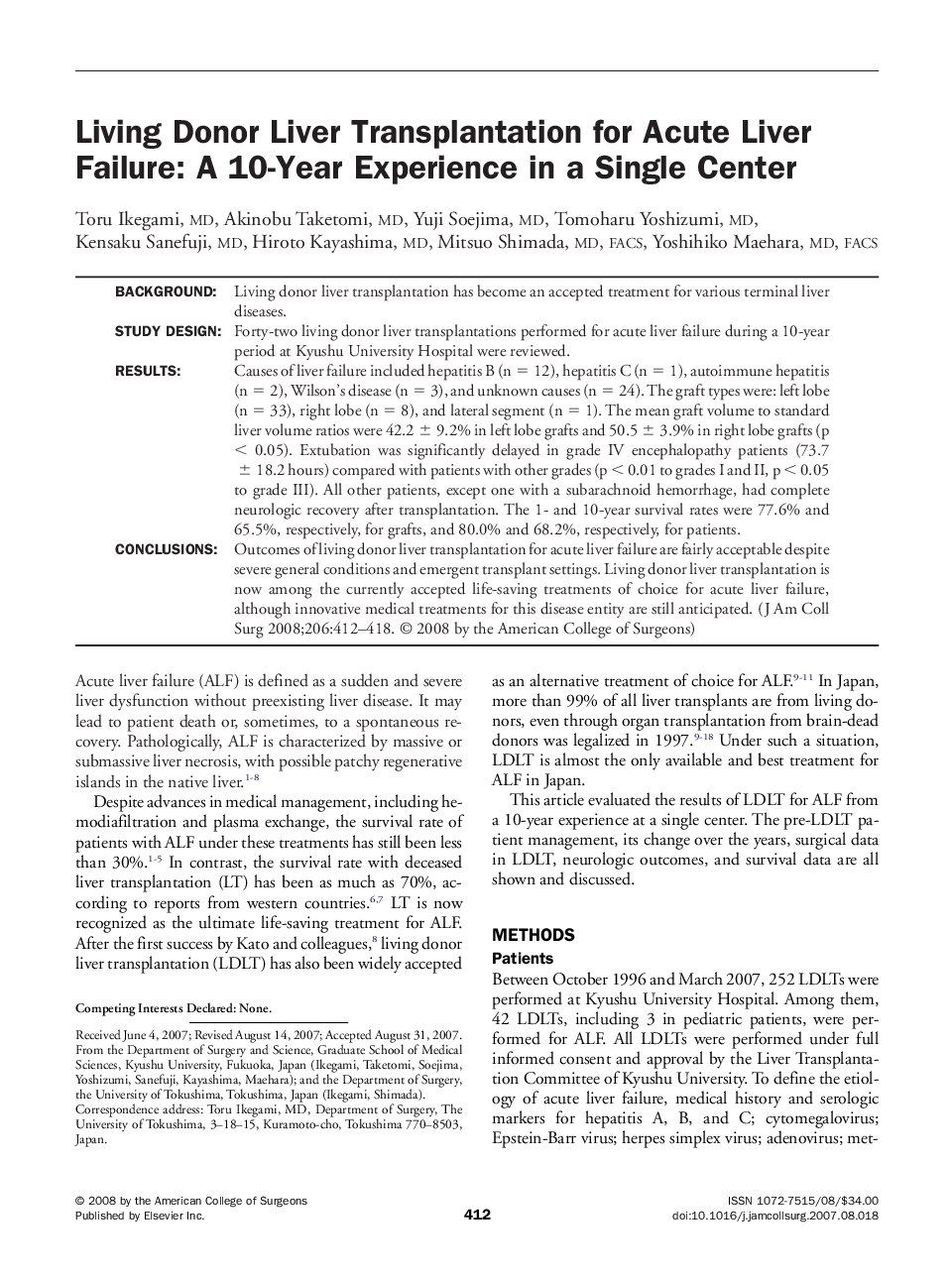| Article ID | Journal | Published Year | Pages | File Type |
|---|---|---|---|---|
| 4295029 | Journal of the American College of Surgeons | 2008 | 7 Pages |
BackgroundLiving donor liver transplantation has become an accepted treatment for various terminal liver diseases.Study DesignForty-two living donor liver transplantations performed for acute liver failure during a 10-year period at Kyushu University Hospital were reviewed.ResultsCauses of liver failure included hepatitis B (n = 12), hepatitis C (n = 1), autoimmune hepatitis (n = 2), Wilson’s disease (n = 3), and unknown causes (n = 24). The graft types were: left lobe (n = 33), right lobe (n = 8), and lateral segment (n = 1). The mean graft volume to standard liver volume ratios were 42.2 ± 9.2% in left lobe grafts and 50.5 ± 3.9% in right lobe grafts (p < 0.05). Extubation was significantly delayed in grade IV encephalopathy patients (73.7 ± 18.2 hours) compared with patients with other grades (p < 0.01 to grades I and II, p < 0.05 to grade III). All other patients, except one with a subarachnoid hemorrhage, had complete neurologic recovery after transplantation. The 1- and 10-year survival rates were 77.6% and 65.5%, respectively, for grafts, and 80.0% and 68.2%, respectively, for patients.ConclusionsOutcomes of living donor liver transplantation for acute liver failure are fairly acceptable despite severe general conditions and emergent transplant settings. Living donor liver transplantation is now among the currently accepted life-saving treatments of choice for acute liver failure, although innovative medical treatments for this disease entity are still anticipated.
